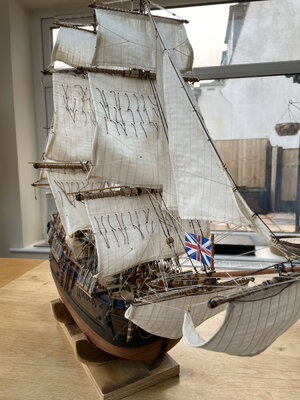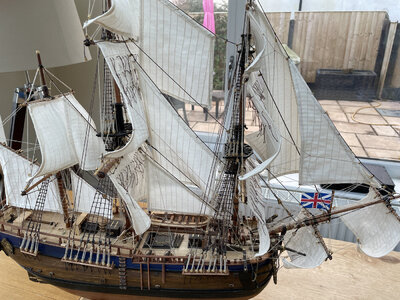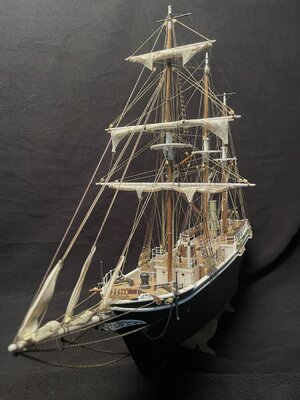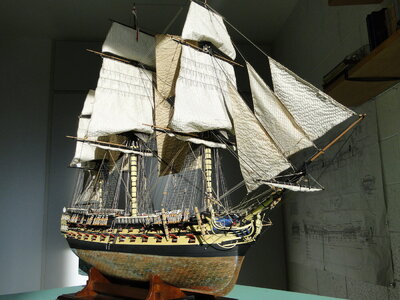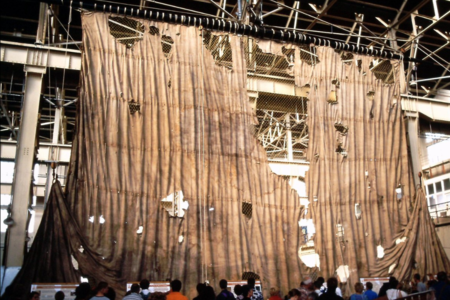- Joined
- Feb 15, 2019
- Messages
- 371
- Points
- 168

A note on weathering. Ships lost sails regularly on a voyage, a supply of sail cloth was carried and a sailmaker was part of the crew. See the better films like Master and Commander and we see a white sail catching the sun. The fastest way to make a sail unrealistic is to stain it with tea!. Your sails will darken with sunlight and dust over time and will soon lose the whiteness. Personally I do weather my sails, but only on the lower edges using very subtle watercolour washes applied with a brush. As a marine artist I'm highly practiced with the use of colour, colour mixing etc.Thanks guys for the quick responses ... so many good options to consider. I had read about weathering the sails with tea ... it might have to be a leap of faith and just try it as the sails are ready made and no spare material to test on. I like the idea of fabric stiffener ... I read of someone using watered down PVA glue painted and formed before drying. I'll post how I get on. Thanks again.
There are many YouTube videos using the tea staining process, all of them giving the impression that this is somehow an advanced professional approach you should aspire to. The comments section is filled with the usual "Wows" and "I'll sure be doing that on my next build"! In fact it makes the sail look like the dog has just relieved himself on it!
With regard to sails generally RN sails were linen based, very slightly tinged with cream. American sails were cotton and generally a pure white. I have always discarded the kit sails and made my own using lawn cotton. I don't sew! If you can find it George Bandurek has a book, Super Detailing the cutter Sherborne, which has an excellent section on his technique using pen instead of sewing (sewing is always off scale) The results look far more realistic than any sewn sail. Extracts from his book were on MSW.



